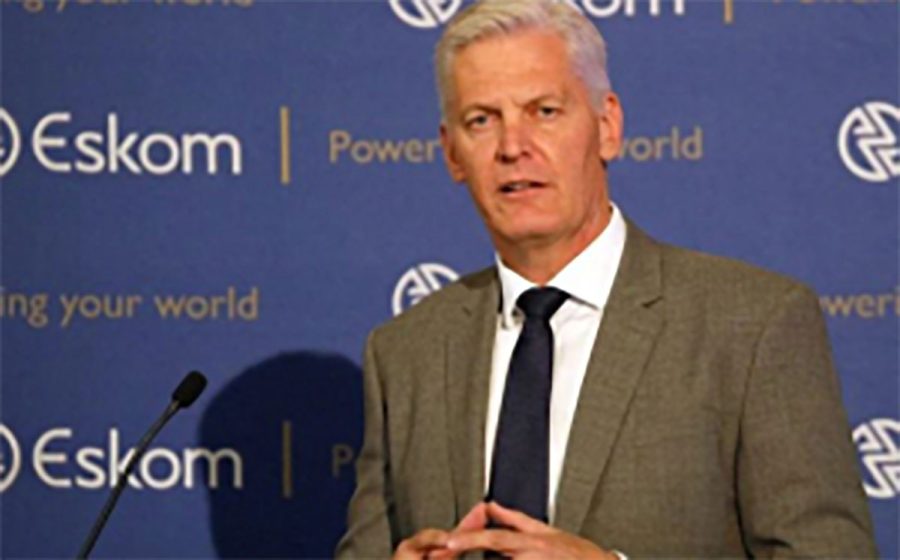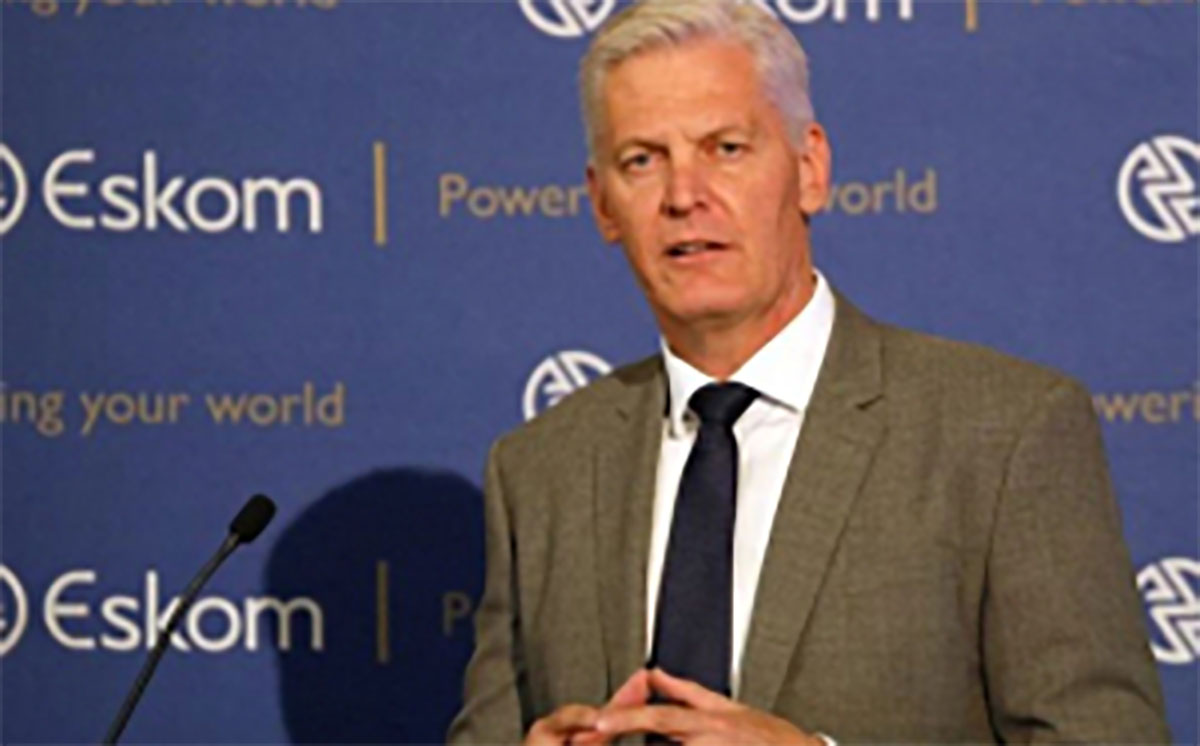
De Ruyter: Eskom’s Working ‘Flat Out’ to Restore Energy to Grid
Eskom CEO, Andre de Ruyter, says the power utility is working hard to bring back failing generation units and restore stability to the grid. His pledge comes after multiple trips, breakdowns and delays in return to service at generation units caused the implementation of Stage 6 load shedding over the weekend. De Ruyter said teams […]

Eskom CEO, Andre de Ruyter, says the power utility is working hard to bring back failing generation units and restore stability to the grid.
His pledge comes after multiple trips, breakdowns and delays in return to service at generation units caused the implementation of Stage 6 load shedding over the weekend.
De Ruyter said teams at coal fired power stations are “working flat out” to bring back generation units as quickly as they can.
He warned, however, that not all units will be immediately available to feed the grid.
Speaking yesterday, he said: “We are planning to bring back 1 590 MW by (Sunday) peak and then a further 3 500MW by Monday evening.
“We can expect that not all of this will make its way smoothly onto the grid due to the age and condition of these units. Once they are brought back, there are very often repeat trips, which then need to be addressed. But… I can give you the assurance that our teams are engaged and working very hard at our power stations to enable us to address the shortfall in generation capacity,” De Ruyter said.
By Sunday, Eskom had lost at least 22 000MW of generation capacity due in part to units being taken offline for maintenance, but mostly from unplanned breakdowns.
De Ruyter said added to this, reserve generation capacity is also at levels that are “too low for comfort”.
“The system has been under pressure over the past week. This has caused us to run our reserves… very hard. We are at a situation where we need to urgently replenish those reserves in order to maintain an adequate safety buffer, as we are required to do by the grid code.
“Because our reserves are low, we cannot run our open cycle gas turbines (OCGT) at Ankerlig and Gourikwa (power stations) as hard as we would like to. We’ve got 32% diesel levels at Ankerlig, which is too low for comfort. We need to replenish that. The situation at Gourikwa is significantly better… We’re sitting at 85% there,” he said.
De Ruyter said the company’s ability to buy diesel for the OCGTs is “an issue”, with R7.7 billion already used to buy the fuel in since April.
He said generation capacity has also been constrained by the loss of some 800MW at Kusile Power Station and a further 900MW still unavailable at the Koeberg Nuclear power station.
“We have a challenge at Koeberg Unit 2 with the reactor head gear. This is a mechanical problem that we need to fix in order to operate the plant safely. I can give South Africa the assurance that we are being extremely cautious and we are consulting very closely with the contractor who is on site.
“Since [the breakdowns], we have seen Kusile unit 3 come back from a submerged scraper chain failure. The unit is ramping up… so it’s not yet at full load and that would make a big difference,” he said.
De Ruyter said steps are also being taken to urgently procure more electricity following an urgent Eskom board meeting in the presence of DPE Minister, Pravin Gordhan, on Saturday.
“[On Monday], we will be approaching the market to procure whatever megawatts that are available on an urgent basis. We think that we can get about 1 000 MW from available generation capacity that we can tap into.
“Not all of that is immediately available. Some of that relies on suppliers having to replenish their coal bunkers or secure additional gas supply. But in the case of IPPs (independent power producers), we have a very high degree of confidence that we can urgently procure more megawatts,” De Ruyter said. – SAnews.gov.za
